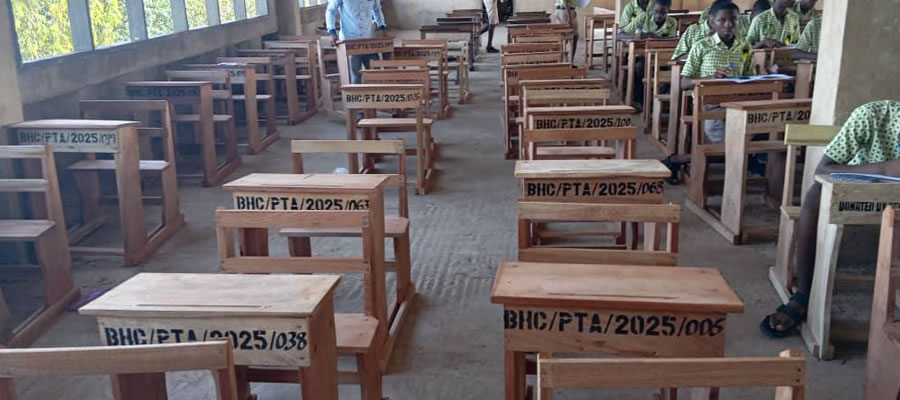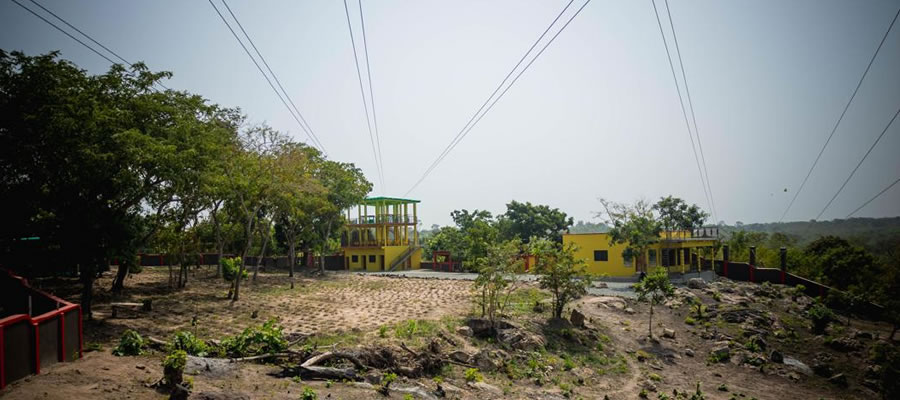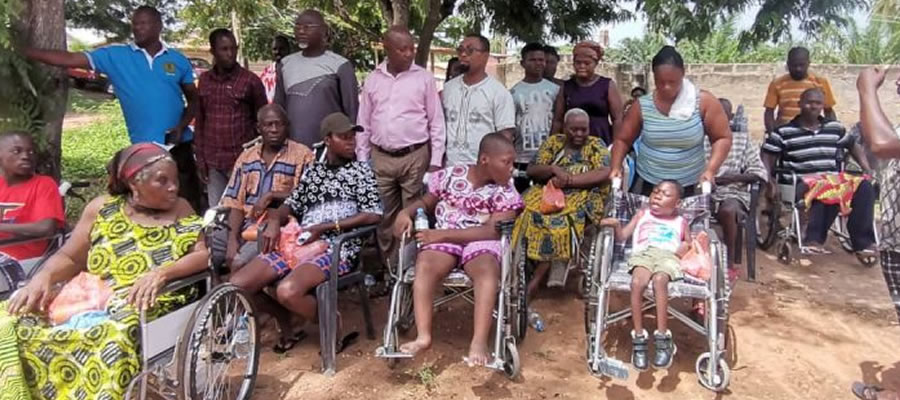

Agricultural Sector Growth
The Municipality’s is basically dominated by agricultural activities and it is estimated that about 62% of the active population is engaged either directly or indirectly in this sector. The climatic condition of the Municipality favorably supports variety of crops and livestock production. Crop production is characterized by small farms land holdings with average farm size of 0.5 ha, the use of simple farm tools and techniques, bush fallowing or shifting cultivation practices, over reliance on rain-fed agriculture and low level of inorganic fertilizers and other chemical application. About 98% of farm land holders in the Municipality are food crop growers, 17% are involved in tree crop farming and 3% are in industrial crop production and about 18% in livestock farming.
Food Crop Production
Food crops such as maize, rice; plantain, cassava, yam and other vegetable s especially garden eggs are grown both on subsistence and commercial level. Annual production over the years continues to decline in relative term in spite of several programme interventions by the Municipal Office of the Ministry of Food and Agriculture. This is due to increasing cost of farm inputs and the low soil fertility. Crop production is largely rain-fed and traditional technology of production continues to dominate the sector with peasant farmers using simple tools such as hoes and cutlasses. The average land holding per farmer is relatively low and is about 0.5ha. The table below illustrates the major production areas in the Municipality.
Cash Crops
The main cash crop grown in the Municipality was Cocoa which was mostly grown in the high rainfall areas. There had however been significant reduction in the production and yield of the crop over the years. The reduction was as a result of the aged farms, poor maintenance, disease and past infestation and the submersion of a large track of Cocoa farm caused by the creation of the Volta Lake.
Non-Traditional Export Crops
There are some non-traditional export crops which have emerged recently and wholly owned by expatriate farmers. The main crops under cultivation are Mango, Pawpaw, Pineapples and Vegetables. The Production of these crops are on a large scale of plantation for the export market and at the same time providing employment for the youth in the Municipality.
The table below shows the major farms and their location.
Livestock Industry
The Livestock sector which accounts for 18% is less developed. Despite the production being widespread, output of livestock is however low. Common livestock found in the Municipality include Sheep, goat, Cattle, Pigs, Ducks and Guinea Fowls.
About 80% of all households in the Municipality keep one or the other type of livestock. The commonest livestock among them are the Domestic Fowls. The system widely practiced is the Free-Range whereby the birds are allowed to scavenge for food the whole day with little or no supplementary feeding. These birds are generally hard with low growth rate and have poor weight gains. The birds generally receive no medication and suffer from the annual Newcastle Disease Outbreak. There are about 16 poultry farms in the Municipality. Poultry production is gradually increasing in the Municipality.
Households keep small ruminants (sheep and goat), with most of them being housed during the day and let loose in the evenings for foraging. Cattle production is rather on a relatively small scale and confined mostly to the western tip of the Municipality bordering the Volta Lake around Kpando Torkor and Gbefi.
Fishing Industry
The creation of the Volta Lake in 1964 resulted in an immense fishery potential estimated at 40,000 tonne per year on which some 300,000 fisher folk nation wide depend for their livelihood. By the mid 1980’s the lake fishery had become unprofitable with a sizeable proportion of the fishermen using illegal fishing methods such as Adranyi, Atidza, Bamboo, Zugu and Agbodor which account for the depletion of the lake resources. Studies conducted in 2003 have shown that fish catch per unit of effort declined from 16.4kg/canoe/day in 1991 to 5.8kg/canoe/day in 2000 and estimated to decline further in the years to come if no substantial interventions are prescribed to address the decline.
The fishing is the dominant occupation of thousand of people in the 54 communities in the Municipality living along the Volta Lake. The Major fishing communities include Kpando-Torkor, and Dafor Tornu. There are about 40 other smaller fishing communities along the lake. Fishermen along the Volta Lake are becoming increasingly poorer years after years and livelihoods dependent on the fishing alone is consequently becoming unsustainable. Recent poverty studies on the Volta Lake (Braimah, 2001; Fabio et al, 2002) have shown that those in fishing communities along the lake who have escaped poverty and considered to be in the better class are those who have pursued other livelihood activities in addition to fishing.
Agriculture Extension Services
The Office of Agriculture in the Municipality provides extension services in the form of technical skills through training and visits to farmers. On the farm demonstrations are also carried out to showcase new technologies and developments aimed at enhancing the efforts of farmers. The Municipality is however limited due to the inadequacy of Extension Officers resulting to large coverage of operational areas by the few extension officers.
Date Created : 11/21/2017 7:37:03 AM











 facebook
facebook
 twitter
twitter
 Youtube
Youtube
 +233 593 831 280
+233 593 831 280 0800 430 430
0800 430 430 GPS: GE-231-4383
GPS: GE-231-4383 info@ghanadistricts.com
info@ghanadistricts.com Box GP1044, Accra, Ghana
Box GP1044, Accra, Ghana